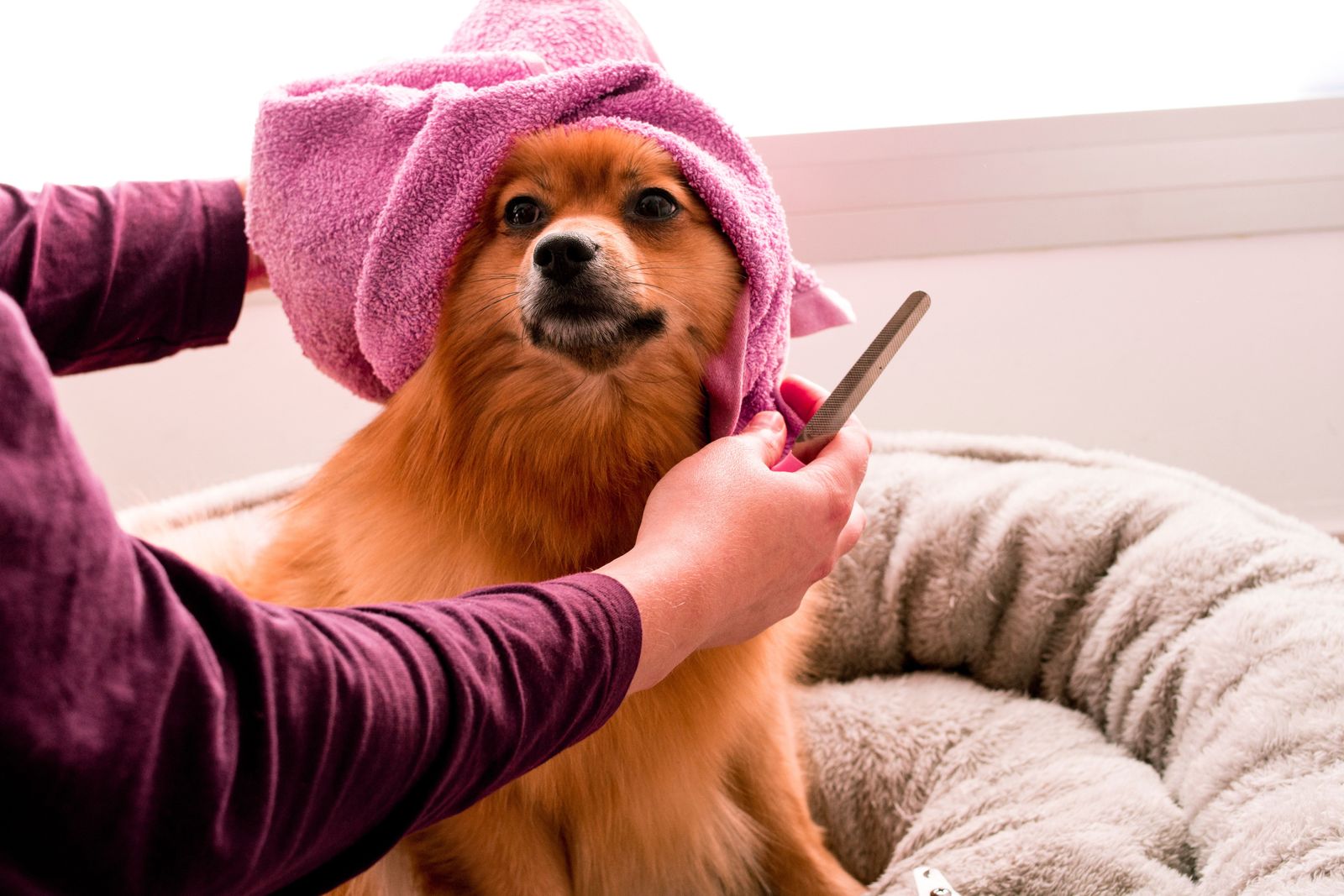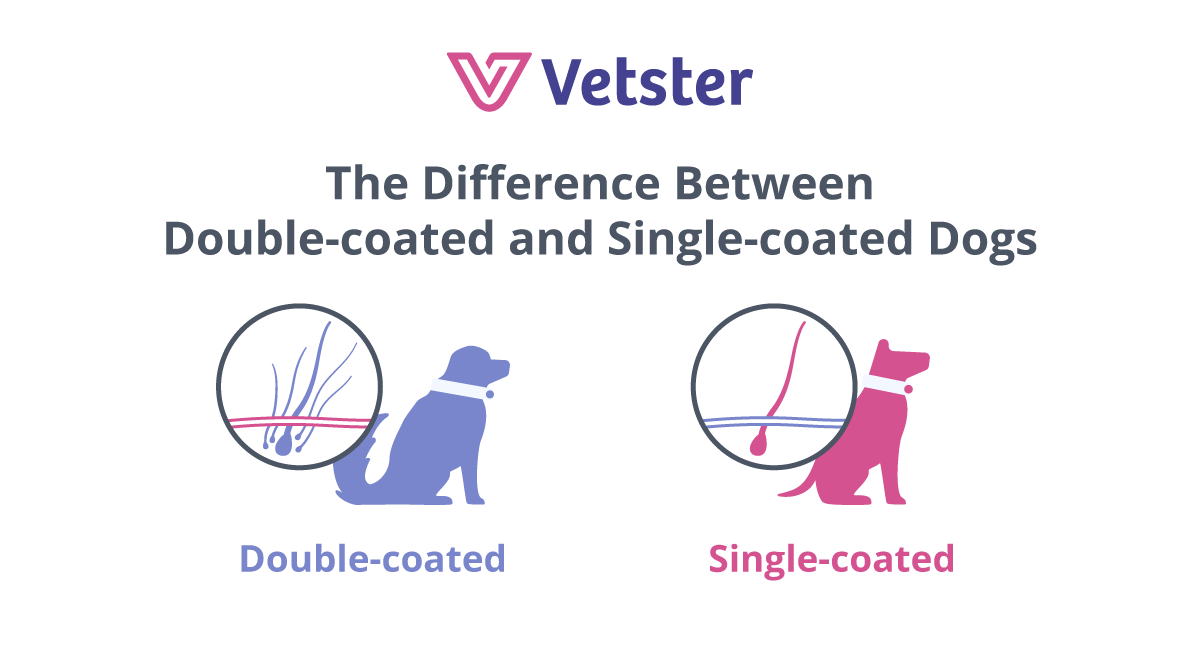What kind of grooming does your dog need?

Grooming your dog regularly, whether at home or at a professional grooming salon, is important to maintain the condition of your dog's coat, skin, nails, and teeth. Just like a human, dogs can benefit from periodically removing dirt and allergens from their body, having their nails trimmed, teeth cleaned, and tending to their coat. The main aspect of grooming that baffles many dog owners is the haircut. Deciding on a haircut and grooming method for your dog depends on a variety of factors.
Undercoat vs. Topcoat
Dogs with an undercoat will shed seasonally and grow in different types of undercoat that help acclimate them to the weather. In warmer weather, a dog’s undercoat will be thin and help to encourage airflow, while the top layer of fur traps cool air against its skin. In cooler weather, a dog’s undercoat will appear fluffier and thicker to help insulate them against the cold. In addition, a dog’s muscles can activate their undercoat, providing further insulation. Double-coated dogs may require more frequent grooming to remove mats or undercoat fur in warm weather.
Dog breeds with a double coat (undercoat and top layer) include:
- Huskies
- German shepherds
- Akitas
- Golden retrievers
- Labradors
- Pomeranians

Dogs with a single coat usually appear to shed less and don’t require the heavy grooming needed when double-coated dogs “blow” their undercoats. .
Dog breeds with a single coat (no undercoat) include:
- Poodles
- Terriers
- Maltese
- Bichon Frise
- Shih Tzus
- Border collies
Grooming methods are not the same for all dogs
The best grooming methods vary between breeds, coat types, and coat lengths. In general, canine coat lengths are categorized as short, medium, or long. A dog with a short length of fur, like a dalmatian, may be relatively low maintenance, while a dog with the longest length of fur, like a Maltese, may become tangled or matted, no matter if the dog has a single coat or double coat. In addition, coat texture can affect what type of haircut your dog should get and how easily their fur can be managed. Coat texture can range from curly and rough or wiry to silky and smooth or even hairless. Depending on your dog’s coat length, texture, and overall type, they may require different grooming methods. Grooming methods may also be chosen in some cases for aesthetic purposes. Grooming methods include:
Cutting or clipping
Cutting or clipping is one of the most popular grooming methods as it is quick and easy for the groomer. Cutting or clipping can be adapted to different dogs and types of coats. You can have your dog’s fur cut shorter or longer, or even make special requests to give them a unique style. Cutting or clipping is not right for every dog, however, as some breeds have a coat texture that is better suited to other methods. The texture and color of the fur may change after clipping with some dog breeds.
Trimming
Even if your dog doesn’t need a major haircut, their regular grooming schedule should include a little trimming around their eyes, paws, and ears as well as the genital area. This helps to keep these areas free of dirt, debris, and mattes that can be painful or interfere with their normal activities.
De-matting
De-matting can remove mild to moderate mattes and tangles from a dog’s fur without fully cutting or shaving its coat. A groomer can use a variety of tools to de-mat your dog’s fur, including some that you may purchase to use at home also, like a Furminator. De-matting tools often make use of a special type of bladed comb that will easily pass through your dog’s untangled fur and stop the mats from forming. The blades in the comb can gently cut the mat out of the surrounding fur without removing too much of your dog’s coat.
Shaving
Shaving involves cutting your dog’s fur very short, close to the skin, so that almost no fur remains above the surface of the skin. Shaving can be helpful in certain situations, such as before surgery or in the case of extreme mats that cannot be safely removed in another way.
Hand stripping
Hand stripping is a grooming method for dogs with wiry coats that involves gently pulling the loosened fur out with your fingers. If done properly, hand stripping should not hurt your dog and many dogs enjoy the process. It may be best to have a professional hand strip your dog if you are not familiar with the technique.
Breeds that may require hand stripping include:
- Schnauzers
- Cocker spaniels
- Wire-Haired dachshunds
- Some types of terriers
- Affenpinschers
Don’t shave your dog unless there’s a reason to
While it may be tempting to shave your dog's fur during the summer to keep them cool, you may be creating more problems than you solve. Every dog doesn’t need to be shaved to stay cool in the summer. Shaving is primarily necessary for dogs who need it to keep their fur from getting overly long, like poodles or Old English sheepdogs, or for medical reasons like when the coat is excessively matted. A healthy fur coat functions to trap the cooler indoor air against their skin and protect them from the elements. Shaving your dog's fur or cutting it too short can put your dog at risk of irritation from sun, insects, and allergens, as well as sharp or rough surfaces. Avoid shaving your dog except in necessary circumstances such as when recommended by your vet or qualified groomer.
Protect your dog’s skin after a haircut
If your dog has thin or sparse fur, is hairless, or has had its fur cut short or shaved, remember to protect their exposed skin from the sun. Dogs with delicate or exposed skin should be primarily kept indoors. Lightweight clothing or vests can help to protect your pup’s skin when extended time outdoors cannot be avoided. Specially made canine sunscreens are available, but these aren’t terribly practical for regular or widespread use.
How often should you groom your dog?
Some dogs may require little grooming, while others may benefit from visiting a groomer as often as every two weeks. Keep up with a regular grooming routine for your dog to keep their coat in good condition. A clean and healthy coat will keep your dog feeling their best, so your dog should visit the groomer as frequently as needed to maintain its coat condition. If you aren’t sure how often your dog should get a trim or haircut, you can ask a qualified grooming professional or book a virtual appointment to consult a vet who can create a grooming schedule for you to follow.




